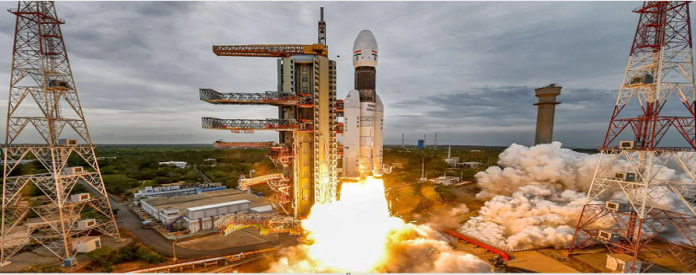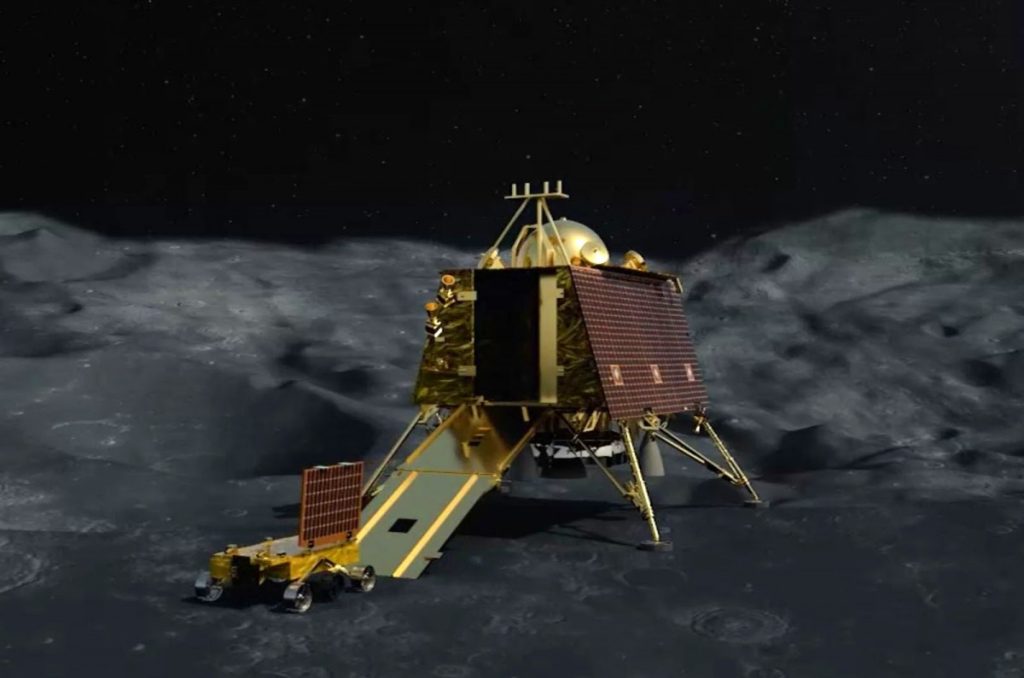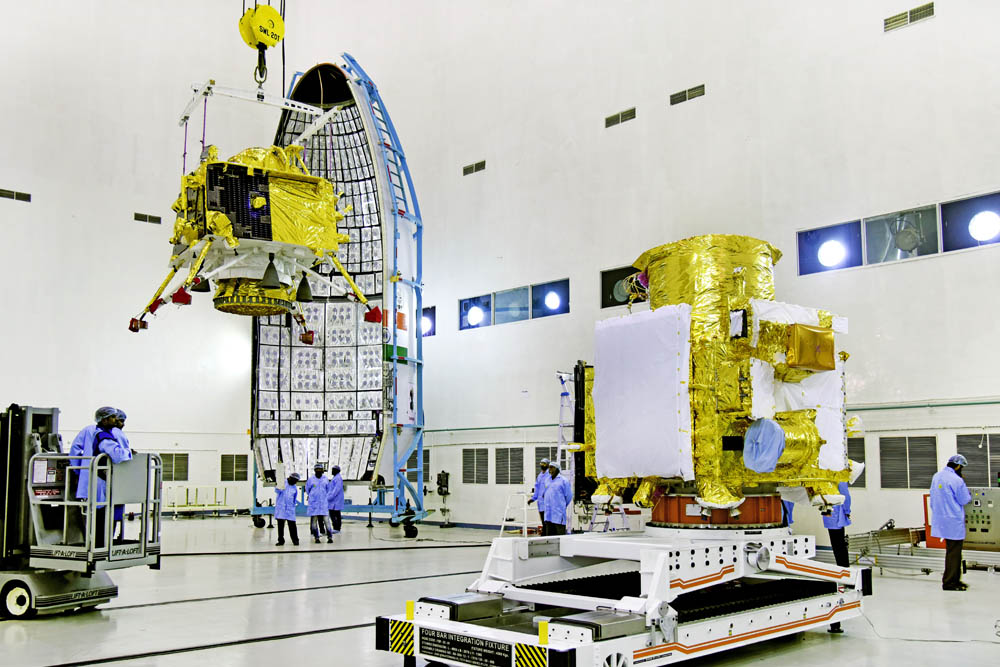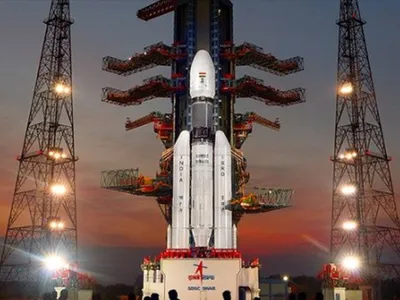Quoting the Missile Man of India- Dr. A.P.J. Abdul Kalam – “History has proven that those who dare to imagine the impossible are the ones who break human limitations,” India- the land of Space Charmers has once again come together to celebrate the glorious success of the launch of Chandrayaan-3. With lSRO’s scientists leading the lunar mission from the front, the nation’s scientific and space community is stronger than ever.
ISRO, to date, has successfully launched 120 satellites into outer space. In 2014, India not only joined the elite group of countries and became the first Asian nation to reach Mars with its Mission Mangalyaan, but also did it in its very first attempt and at a shoestring budget of just $73 billion. In 2017, ISRO yet again did the unfathomable when its Polar Satellite Launch Vehicle (PSLV-C37) successfully launched 104 satellites in a single flight. Today, India has over 140 registered space-tech start-ups that are pushing boundaries in cultivating a strong ecosystem of the best space programs in the years to come. This year’s visit of the Hon’ble Prime Minister Mr. Modi to the USA also witnessed major decisions on collaboration in the space economy between the two democracies. India’s space economy was evaluated at over $9.6 billion in 2020, and considering the current splurge of investments in its space programs, it is expected to shoot up by $13 billion by 2025.
Shooting for the Moon – Top Facts Surrounding Chandrayaan-3
“Imagine a spacecraft hurtling through space, at ten times the speed of an aircraft, having to nearly come to a standstill to land gently on the earth – all in a matter of a few minutes and, more importantly, without any human intervention. This, in a nutshell, is a soft landing.” This explanation given by an ISRO scientist sets the tone for Chandrayaan-3 and its capabilities.
The third lunar mission of ISRO – Chandrayaan-3 is a follow-on mission to Chandrayaan-2 that aims to demonstrate the end-to-end capability in soft landing and roving on the moon. It was successfully launched by LVM3 (GSLV Mk3) – the heaviest launcher in India, from Satish Dhawan Space Centre, Sriharikota, Andhra Pradesh on 14 July 2023, at 14:35 hours IST, bringing humanity closer to the moon. If everything goes as planned, India’s Chandrayaan-3 will soft land on the south pole of the moon on August 23, 2023.
Chandrayan-3 consists of an indigenously built Lander Module (LM), a Propulsion Module (PM), and a rover (Pragyan). The lander (Vikram) is expected to soft land at a specified lunar site and deploy the rover, which will carry out in-situ chemical analysis of the lunar surface for a lunar day (14 earth days).
Vikram – the lander, contains four payloads –
- Chandra’s Surface Thermophysical Experiment (ChaSTE) will measure conductivity and temperature.
- Instrument for Lunar Seismic Activity (LSA) for measuring the seismicity around the landing site
- Langmuir Probe to estimate the plasma density
- A passive laser Retroreflector Array for lunar ranging studies
Pragyan – the rover contains two payloads that aim to derive the elemental composition in the vicinity of the landing site.
- Alpha Particle X-ray Spectrometer
- Laser Induced Breakdown Spectroscope (LIBS)
While eight payloads from Chandrayan-2 have been sending remote sensing data since 2019, Chandrayaan-3 will add seven more, among which one will revolve around the moon and six will work on the lunar surface. Also, Chandrayan-3 contains a payload that will face the earth from the lunar surface to extend information that will help explore exoplanets in the future.
From what we know, unlike last time, the lander will be tracked by ISRO Telemetry, Tracking, and Command Network (Istrack) in Bengaluru. ISRO’s Chief S Somnath also said that the mission has been designed to land successfully even under scenarios of sensor failure, engine failure, algorithm, and calculation failure that have been pre-examined and measures have been developed to counteract them.
The “Secret” Behind ISRO’s Low-Budget Missions
The Chandrayaan-3 mission took flight under a limited budget of 615 crores (USD 75 million), while, the Chandrayaan-2 and Chandrayaan-1 missions took 970 crores (USD 128 million) and 386 crore (USD 52 million) respectively. The secret to ISRO’s low-budget missions is the use of their indigenously built technology and spacecraft development procedures.
The approach of firing at the perigee adopted by ISRO for its interplanetary missions (Chandrayaan and Mangalyaan) is a masterstroke; a highly efficient way to move from one circular orbit (such as Earth’s orbit) to another circular orbit (such as the Moon’s orbit).
The spacecraft is first launched into a parking orbit around the Earth. Then, a series of engine burns are performed at specific points (perigee) in the orbit to increase the spacecraft’s speed (burning at perigee) or slow it down (burning at apogee). These burns gradually raise the apogee of the orbit until it reached the desired distance from the Earth to intersect with the Moon’s orbit.
Once the spacecraft reaches the point where its apogee intersects with the Moon’s orbit, another engine burn is performed to enter a lunar transfer orbit. As the spacecraft approaches the Moon, another engine burn is executed to slow down and enter the desired lunar orbit.
This multi-step process allows the spacecraft to use its engines efficiently and take advantage of the natural dynamics of celestial bodies’ gravitational fields to reach the Moon or other targets in space. This usually takes a few days or even weeks to complete the journey, depending on the specific mission design and goals.
A mission like Chandrayaan is a highly complex endeavor, and the trajectory and mission design are carefully planned and optimized by ISRO scientists to ensure the success of the mission while conserving resources and achieving scientific objectives.
By carefully planning the trajectories and timing of engine burns, the missions can execute low-energy transfers, to move from Earth’s orbit to lunar orbit. The spacecraft’s engines are precisely controlled during each maneuver to minimize fuel consumption and achieve accurate orbit insertion around the moon.
By employing these strategies and capitalizing on the natural dynamics of space travel, ISRO conducts successful interplanetary missions while conserving precious resources, thus saving millions of dollars.
Walking Down the Memory Lane
While the achievements of the Indian scientific fraternity are way beyond applause, we must also remember how the nation began one of its most significant space journeys that is an inspiration to space giants like NASA. Let us have a glimpse of how far India has come in its space voyage starting with the inception of the Indian Space Research Organisation (ISRO) in 1969 under the leadership of Dr. Vikram Sarabhai who is also known as the Father of the Indian Space Program.
- 1962 – The Indian National Committee for Space Research is established
- 1963 – First Sounding rocket is launched from Thumba Equatorial Rocket Launching Station in Kerala. This marks the official beginning of the Indian Space Program
- 1965 – Launch of India’s first Indigenous Rocket Rohini-75
- 1969 – On August 15, Indian Space Research Organisation is formed
- 1971 – Satish Dhawan Space Centre is established in Sriharikota, Andhra Pradesh
- 1975 – On April 19, the first indigenously built Indian satellite, Aryabhatta is launched into space
- 1979 – First Experimental Remote Sensing satellite is launched. The images traced were used in the field of hydrology and forestry
- 1980 – On July 18, the First experimental satellite vehicle (SLV-3) is launched. India now ranks sixth among all nations globally in the space program.
- 1982 – Communication satellite Insat-1A is launched
- 1984 – Rakesh Sharma becomes the first Indian astronaut to travel to space along with two other Russian astronauts
- 1987 – ASLV (Augmented Satellite Launch Vehicle) is launched
- 1993 – Successful maiden launch of PSLV-G with IRS-1E
- 1994 – Successful launch of PSLV
- 2001 – In April, GSLV is successfully launched
- 2008 – India’s first moon mission Chandrayan -1 is launched by PSLV
- 2014 – India’s first interplanetary mission to the planet Mars known as the Mars Orbiter Mission and Mangalyaan is launched
- 2019 – Chandrayaan-2 is launched onboard GSLV MK3-M1 launcher
- 2023 – LVM3 M4 vehicle launches Chandrayan-3 into orbit
What does this mean for India and its Future Space Exploration?
Mounting a mega mission, once Chandrayaan-3 soft lands on the moon on August 23, 2023 (expected date), India will become only the fourth nation to have executed a mission so intricate and extravagant. India will join the USA, China, and Russia in delivering a massive strike in the lunar mission, thus showcasing its strength and dominance in the governance of outer space.
With the government fuelling the skyrocketing growth of the space sector with new and better policies, and India signing the Artemis Accords, a US-led international partnership on planetary exploration and research, the country is looking forward to a significant partnership with France, Japan, and Australia as well.
As a futuristic next step that will strongly position India as the “Bahubali” of the Space sector in the 21st century, globally, the Indian Cabinet Committee for Security has approved the Indian Space Policy – 2023. The policy focuses on distributing responsibilities between entities – IN-SPACe (Indian National Space Promotion and Authorisation Centre), and NSIL (New Space India Limited) – which is an institutional setup within the Department of Space (DoS), giving ISRO the freedom to now work on the Research and Development of new Space Technologies and Applications, and on further expanding the human understanding of the outer space. With this policy in action, ISRO is expecting greater participation from non-government entities – academia and research community and start-ups and industry.
Recognized for building the most cost-effective satellites in the world and taking hundreds of foreign satellites to space, ISRO plans to conduct 50 launches by 2024. The space giant aims to increase the launch frequency to 12+ a year and is also eying on several extraterrestrial exploration missions like –
- Aditya L1 is a planned coronagraphy spacecraft to study the solar atmosphere currently being designed and developed by ISRO and a few other Indian Space Agencies.
- Gaganyan is a human space flight mission under development and will be a complete Indigenous mission- developed by ISRO that will carry Indian astronauts to space.
- Lunar Polar Exploration Mission also known as Chandrayan-4, is a planned robotic lunar mission concept
- Mars Orbiter Mission-2 also known as Mangalyaan 2, is India’s second interplanetary mission expected to begin in 2024
- Shukrayan-1 is a planned orbiter to Venus by ISRO to study the surface and atmosphere of Venus
The nation is quite upbeat about the various achievements of ISRO as it also plans to launch an unmanned mission and send a robot in the first and the second mission respectively, preceding the Gaganyan launch.
The Sky is not the Limit for India Anymore
India’s journey in the field of Space and Technology has been nothing short of exceptional. What India has achieved in over six decades is a matter of great pride and a testimony to its centuries-old depth of scientific temperament. ISRO as an organization is an extraordinary example of how to rise above the odds. Keeping our hopes higher than ever, ISRO is also planning a mission to Jupiter and a mission to explore beyond the realms of our solar system has also been proposed. Keeping our fingers crossed, Indians are in for roller-coaster experiences as ISRO is set to make many more discoveries.












